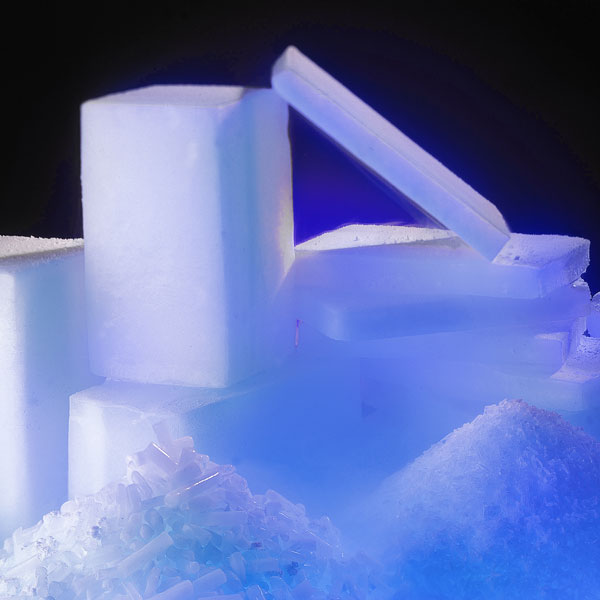Solid Carbon Dioxide (CO2) or Dry Ice
Dry ice is a trade name of the solid form of carbon dioxide. It is non-toxic (food-grade), non-combustible, and is milky white in color. It has a low temperature of -79C. At atmospheric pressure, dry ice sublimates directly to gas without a liquid phase. This unique property means that the dry ice simply “disappears” when it heats up, leaving no residue or waste to be cleaned.
It is best to store dry ice in an insulated container. Dry ice can dissipate at an average rate of 1.5kg to 4.5 kg per day. Dry ice will dissipate at an average rate of 1.5kg to 4.5 kg per day. This is only a guide as the rate of dissipation will depend on a lot of environmental factors. For example, the thicker the insulation of its container… the slower it will sublimate. Slabs of dry ice also last longer than pelletized dry ice, which sublimates faster.
Do not store dry ice in a completely airtight container. The sublimation of dry ice to carbon dioxide gas will cause any airtight container to expand or possible explode. It is important to handle or store dry ice in well-ventilated areas to reduce danger of asphyxiation.
Philippine CO2 Industry Inc. continually upgrades its equipment to the latest technology to ensure product prices can be kept to a minimum. Manufacturing redundancies are in place to ensure a reliable supply for the end user.
Dry ice products can be delivered within Metro Manila and shipped to other selected cities in the Philippines. It can also be picked up from the plant site.
As a low-cost, lightweight refrigerant for frozen products, dry ice helps to maintain the freshness and the product’s original state during transport by creating a bacteriostatic environment. This environment ensures the quality of cooled products as the carbon dioxide (CO2) gas prevents the cooled products from oxidizing. Besides, dry ice already has a high cooling capacity… at least three times the refrigeration capacity of water ice per unit weight. Dry ice slabs are usually used for cooling and freezing purposes.
Medical and clinical laboratory shipment companies depend on dry ice to provide extended cooling for its specialized payload during shipment. More recently, dry ice pellets are also used as a media for surface cleaning purposes.




